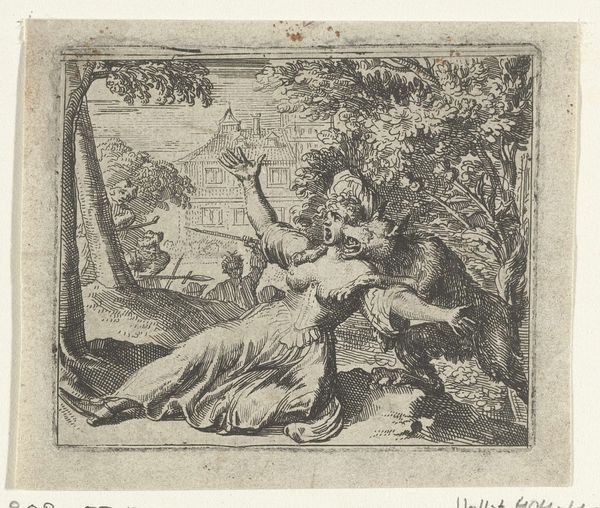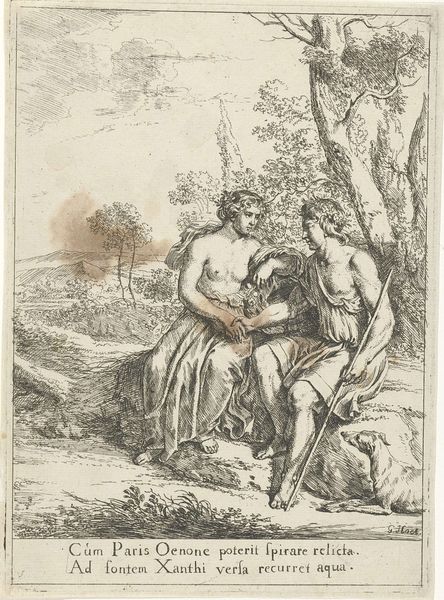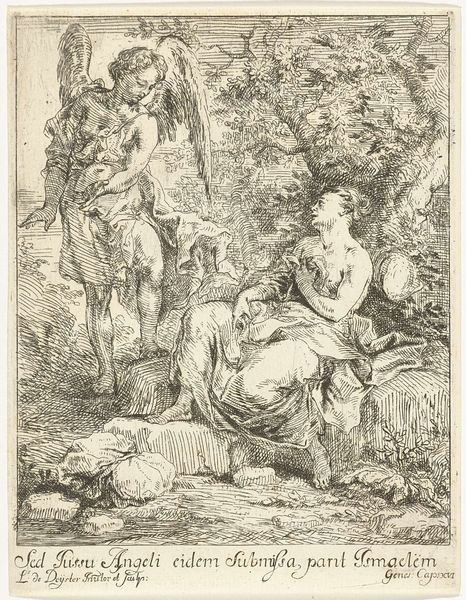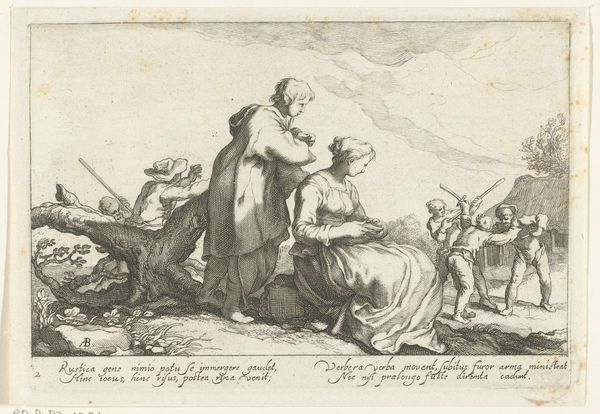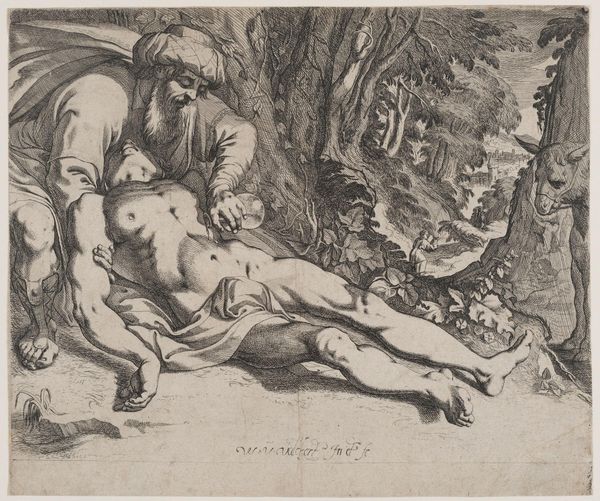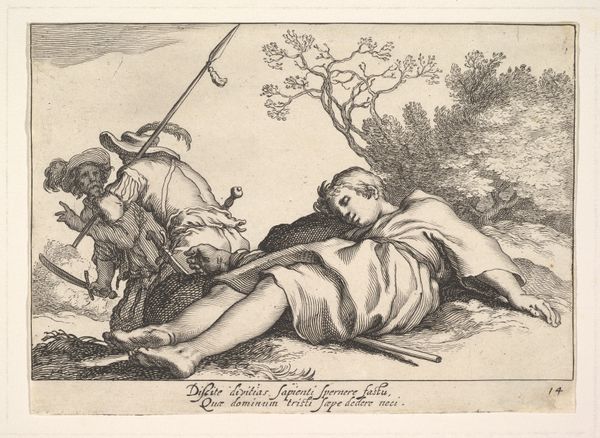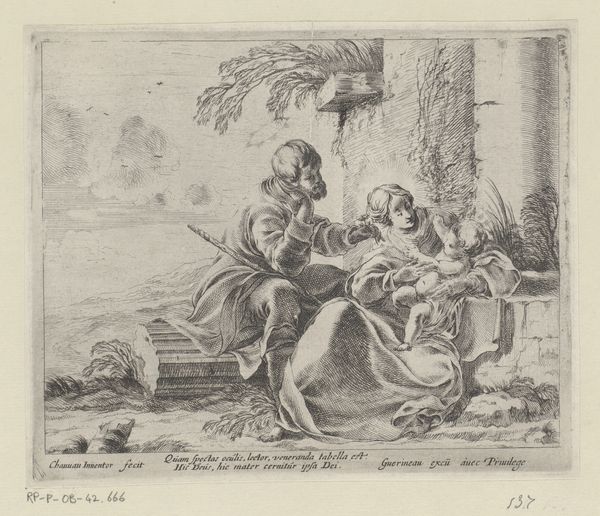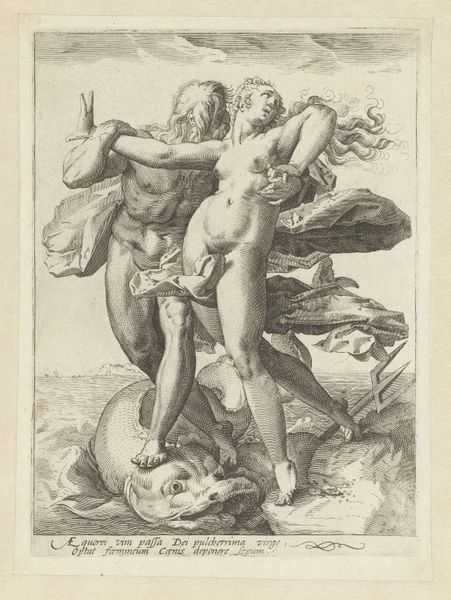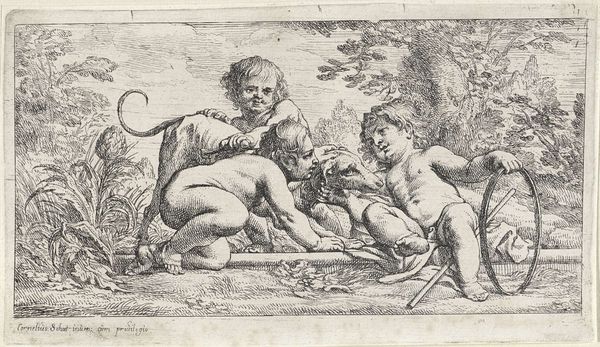
print, engraving
#
baroque
# print
#
landscape
#
figuration
#
line
#
genre-painting
#
engraving
Dimensions: height 105 mm, width 155 mm
Copyright: Rijks Museum: Open Domain
Curator: We are looking at "Gehoor," a print made by Frederick Bloemaert sometime between 1632 and 1670. Editor: It's stark. The contrast is compelling, almost unsettling. There's a sense of isolation despite the presence of two figures. Curator: The print, whose title translates to "Hearing," is currently held in the Rijksmuseum. It features a woman and a man within a rustic landscape. The woman seems to be gesturing, maybe directing the music, and she carries a shepherd's staff next to a sheep, while the man plays a flute. Editor: The woman, she seems like she's supposed to embody some kind of pastoral freedom, but something is off, perhaps it's in her melancholic, perhaps detached expression. Does this engraving reinforce or subvert expectations about gendered labor? About whose stories we actually tell in the genre painting? Curator: Contextually, consider Bloemaert and the art market of the Dutch Golden Age. Prints were accessible, so artists like Bloemaert were navigating economic pressures but also finding ways to participate in visual dialogues. "Gehoor" fits within that paradigm. What were the means to reach wide audiences in a heavily segmented society, and how did that society think of itself? How are such prints received then and now? Editor: The line work is so deliberate; it almost creates a sense of texture. This medium allows accessibility to stories and perhaps more revolutionary viewpoints about society—the subversions become silent conversations. It challenges me to confront biases about idyllic portrayals that ignore power dynamics. Curator: Indeed, it shows us how genre painting contributed to constructing ideas about gender, work, leisure, and more—aspects easily missed in grand history paintings, but incredibly telling in pieces like "Gehoor". We see an image of two figures making music. This connects back to their status in their community, their livelihood, the labor they do for others, and what that labor brings. It speaks to the everyday in unexpected ways. Editor: Ultimately, by grappling with the artist’s historical moment, the themes it emphasizes and elides, one becomes attuned to what survives— and what still needs transformative analysis.
Comments
No comments
Be the first to comment and join the conversation on the ultimate creative platform.
